“From Seed to Success: Unearthing the Secrets of Launching Your Dream Small Farm”
What is a Small Farm – How to Start a Small Farm – The Renaissance of Small-Scale Farming
In the vast expanse of our planet’s history, the story of humanity is but a brief chapter. Yet, within those fleeting moments, we’ve seen revolutions that have shaped the trajectory of our species. The Agricultural Revolution, which dawned around 10,000 years ago, was one such turning point, marking our shift from nomadic hunting to settled farming. Fast forward to today, and we find ourselves at the precipice of another agricultural evolution. Amidst the colossal farming conglomerates that feed the majority of the world, a quieter movement is gaining momentum—a renaissance of small-scale, sustainable farming.
Imagine waking up to the gentle chirping of birds, the cool embrace of morning air, and the earthy scent of freshly tilled soil. Beyond your window, rows of vibrant crops sway harmoniously with the rhythm of nature, while a short distance away, livestock graze peacefully. This bucolic image is not a remnant of a bygone era but a dream and reality for many who choose to tread the path of small-scale farming in the modern world.
But why, in an age of technological marvels and metropolitan allure, are people drawn to this age-old profession? Is it the pursuit of a healthier lifestyle, an affinity for the land, or a deeper, innate desire to reconnect with our roots? The answers are as varied as the crops these farms yield. Yet, they all converge on a shared sentiment: a longing for authenticity and a sustainable relationship with our planet.
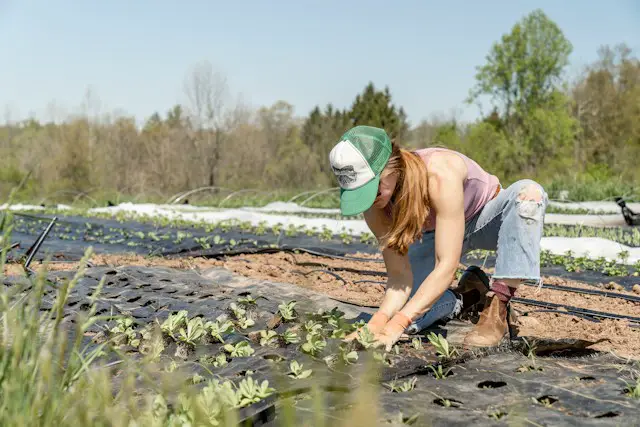
This guide seeks to unravel the myriad layers of starting a small farm—a venture that’s as challenging as it is rewarding. We’ll delve deep into the nuances of soil and seeds, the symphony of seasons, and the economics that underpin this noble endeavor. Whether you’re a city dweller seeking a radical life change or a rural resident looking to cultivate your patch of earth, this guide promises insights and revelations.
So, as you embark on this journey with us, envision not just the tangible harvest of fruits, vegetables, or grains, but also the intangible yield: a renewed sense of purpose, a deeper understanding of life’s cycles, and a profound appreciation for every morsel of food that graces our tables. Welcome to the world of small-scale farming—a world where every sunrise holds a promise and every sunset, a lesson.
Determining the Purpose of Your Farm
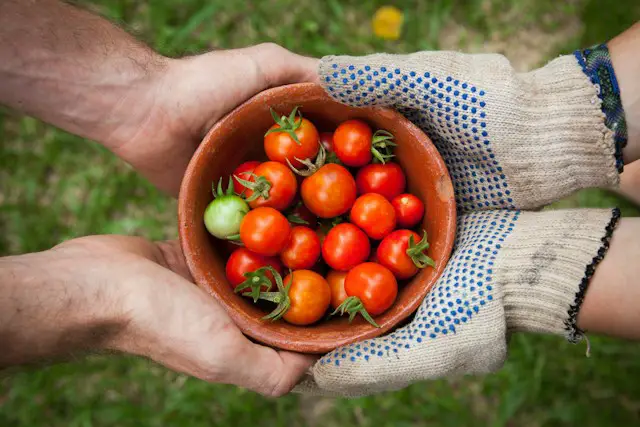
Choosing to start a small farm is akin to laying the first stone for a grand edifice. It’s the foundation upon which all subsequent decisions rest. To chart a successful journey in farming, it’s pivotal to have a clear sense of purpose. This clarity not only drives operational decisions but also serves as a beacon during challenging times. Let’s delve deep into this foundational phase.
1. The Vision Behind Your Venture
Personal Fulfillment: For some, farming is a therapeutic escape from the hustle and bustle of modern life. It’s about getting hands dirty, reconnecting with the earth, and finding solace in the cyclical rhythm of nature. If this resonates with you, your farm might lean more towards personal sustenance, emphasizing self-sufficiency and variety over profit.
Community Impact: Are you motivated by a desire to foster community ties, offer educational opportunities, or provide fresh, organic produce to residents? Farms with a community-driven focus often venture into activities like workshops, farm-to-table events, and local farmers’ markets.
Commercial Aspiration: If you envision your farm as a sustainable business, your approach would be different. Profit margins, scalability, market trends, and consumer demand become crucial. Such farms might lean towards monocropping or specializing in high-demand produce or livestock.
2. Deciding the Type of Farming
Organic Farming: Committed to ecological balance and biodiversity, organic farming abstains from synthetic pesticides, genetically modified organisms, and artificial fertilizers. It’s a holistic approach, often demanding more labor but can command higher market prices.
Biodynamic Farming: Going a step beyond organic, biodynamic farming views the farm as a singular living organism. It follows celestial rhythms for planting and harvesting and uses unique composting methods. This anthroposophical approach integrates spiritual insights into agriculture.
Conventional Farming: Typically relies on synthetic chemicals to enhance crop yield. It might be more economically efficient in the short term, but concerns over environmental impact and consumer health are leading many to explore alternative methods.
Specialty or Niche Farming: Focusing on unique crops or livestock (like heirloom tomatoes, lavender, and alpacas), these farms cater to specific market demands and often enjoy a loyal customer base willing to pay a premium.
3. Scale and Intensity
Hobby Farming: Often started for personal enjoyment or supplemental income, these farms are generally smaller in scale and don’t always prioritize profitability.
Part-time Farming: While not the primary source of income, such farms are managed with a degree of commercial intent, balancing farming with other employment.
Full-time Farming: Here, farming is the primary occupation. Such farms require meticulous planning, substantial investment, and a comprehensive business model.
4. Land and Resource Consideration
Land Size: The scale of your farming aspiration should match the size of your land. For instance, livestock farming, especially larger animals like cattle, requires ample space.
Soil Quality: Certain crops thrive in specific soil types. A soil test would reveal nutrient levels and help in crop selection.
Water Availability: If you’re in a region with water scarcity, consider drought-resistant crops or water-saving techniques like drip irrigation.
5. Long-Term Vision
Adaptability: Given the volatile nature of climate and market demand, how flexible do you want your farm to be? Can you switch crops or farming methods if required?
Legacy: Are you looking to establish a farm that lasts generations? If so, sustainable practices and community integration become crucial.
Expansion: Do you envision scaling up operations in the future? Planning for potential growth can influence initial decisions.
In determining your farm’s purpose, take a step back and introspect. It’s a blend of listening to the whispers of your heart and the rationale of your mind. Understand that as with all endeavors, farming will have its seasons—periods of abundant harvest and phases of learning. Your purpose, once defined, will be the compass guiding you through these cycles.
Choosing the Right Location
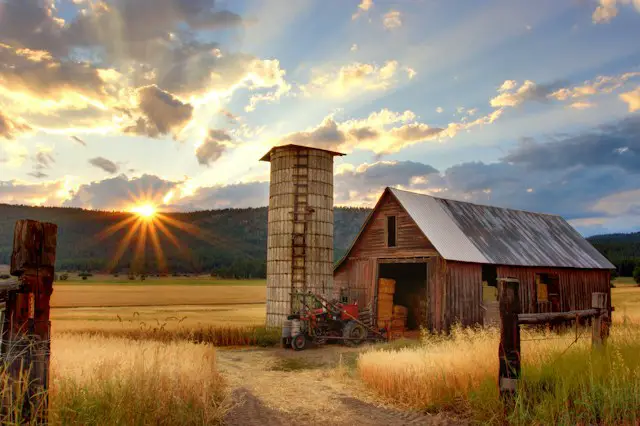
Selecting the right location for your farm is akin to a chef choosing the best ingredients for a gourmet dish. It’s not just about the space; it’s about the blend of myriad factors—soil quality, climate, water accessibility, and more—that combine to create the perfect environment for cultivation. This decision influences almost every aspect of farming, from the crops you’ll plant to the methods you’ll employ. Let’s explore the multi-faceted dynamics of this crucial decision.
1. Climate & Weather Patterns
Zoning: Understand agricultural zones. These zones, often delineated by governments or agricultural bodies, classify regions based on average temperatures and help predict which plants will thrive in which areas.
Season Length: Some crops require long growing seasons, while others need shorter spans. Recognize the duration of seasons in potential locations.
Precipitation: Rainfall patterns can significantly impact farming. While irrigation can supplement water needs, natural rainfall is crucial. Additionally, certain crops might need drier conditions.
Microclimates: Even within a small region, climate can vary. Valleys might be colder, and south-facing slopes warmer. Such microclimates can offer unique growing opportunities.
2. Soil Quality and Composition
Soil Tests: Before finalizing a location, conduct detailed soil tests to understand pH levels, nutrient content, and potential contaminants.
Texture & Drainage: The balance of sand, silt, and clay in soil affects drainage. While sandy soil might drain too quickly, clay-heavy soil can retain excessive water, affecting root health.
Organic Matter: Soil rich in organic matter can support a diverse range of crops, offering better fertility and water retention.
Soil Depth: Some crops, like root vegetables, require deep soils, while others can thrive in shallower beds.
3. Water Access and Quality
Natural Sources: Proximity to rivers, lakes, or groundwater can significantly reduce irrigation costs. However, ensure water rights and regulations are clear.
Water Quality: Just as humans need clean water, so do plants. Ensure water sources are free from excessive salts or harmful chemicals.
Irrigation Infrastructure: In areas with less natural water, check if there’s an existing irrigation infrastructure or the feasibility of setting one up.
4. Proximity to Markets and Transportation
Local Markets: If selling produce locally, consider accessibility to towns or cities. Proximity can reduce transportation costs and ensure freshness of produce.
Export Potential: For those looking at larger markets or even international ones, consider transport logistics. Access to major roads, railways, or ports can be crucial.
Community Supported Agriculture (CSA) Opportunities: Locations with a culture of CSA can provide a ready customer base and consistent revenue.
5. Land Cost and Regulations
Land Prices: While prime agricultural land might be costlier, it can offer better yields and fewer challenges. Balance budget with quality.
Zoning Laws: Ensure the land is zoned for farming. Some regions might have restrictions on types of crops, livestock, or farm buildings.
Future Development: Investigate if the area has potential future developments, like industries or housing projects, which might affect farming.
6. Biodiversity and Natural Barriers
Natural Predators: A balanced ecosystem can reduce pest problems. Birds, insects, or larger animals can naturally control pest populations.
Windbreaks and Natural Barriers: Trees or hills can act as windbreaks, protecting crops. They can also offer microclimates, as mentioned earlier.
Wildlife Considerations: While biodiversity is beneficial, certain wildlife can harm crops or livestock. Understand local wildlife and consider necessary protective measures.
In essence, choosing the right location is a harmonious blend of art and science. It’s about feeling the pulse of the land while backing it up with hard data. As the adage goes, “The best fertilizer is the farmer’s shadow.” Spend time on potential lands, feel their energy, and understand their nuances, and with research and reflection, you’ll find a piece of earth waiting to blossom under your care.
Crafting a Business Plan

Embarking on your farming journey is not just an act of passion, but also one of entrepreneurial spirit. Just as the heart feels the land’s rhythm, the mind must foresee its potential as a viable business. Crafting a comprehensive business plan for your farm is a roadmap—it identifies your destination and the various paths to get there, keeping you grounded, focused, and prepared for the challenges and opportunities ahead. Let’s dissect this crucial document step by step.
1. Executive Summary
Mission Statement: Articulate your farm’s primary purpose. Is it to provide organic produce for the local community, to be a haven for rare livestock breeds, or perhaps a blend of various goals?
Farm Overview: A succinct snapshot of your farm—its size, location, primary crops or livestock, and unique selling points.
Objectives: Outline specific, measurable goals. This could range from producing 500 lbs of tomatoes in the first season to hosting ten farm-to-table events annually.
2. Detailed Description
Farm History: If the land has been previously used for farming, detail its history, crops grown, and any notable events.
Infrastructure: Describe existing structures like barns, greenhouses, or irrigation systems, and any planned additions.
Operational Strategy: How do you plan to run the farm day to day? This could cover staffing, machinery usage, pest control methods, and more.
3. Market Analysis
Target Audience: Who are your ideal customers? Are they local households, restaurants, farmer markets, or wholesale distributors?
Market Size & Growth: Research the current market size for your products and their potential growth. For instance, is there a rising trend in organic kale consumption in your region?
Competition: Identify other farms in your vicinity or those offering similar products. What can you offer that they don’t? Perhaps it’s a unique crop variety or a distinct farming method.
4. Marketing & Sales Strategy
Branding: How will you position your farm in the market? Is it as a premium, organic brand or a local, family-friendly venture?
Promotion: Detail plans for advertising, public relations, social media campaigns, or community events.
Distribution Channels: How will your products reach customers? Direct sales, online platforms, CSA programs, or through middlemen?
5. Financial Projections
Startup Costs: Detail all initial expenses—land acquisition, infrastructure setup, seed procurement, equipment, and initial labor costs.
Ongoing Expenses: Cover costs like seeds, feed, fertilizers, machinery maintenance, labor wages, and marketing expenses.
Revenue Forecasts: Based on market research and pricing strategy, project monthly and annual revenues. Always have a conservative estimate.
Break-even Analysis: Calculate when your farm is expected to break even, considering all the costs and projected revenue.
6. Risk Management
SWOT Analysis: Identify Strengths, Weaknesses, Opportunities, and Threats. This helps in strategic planning and anticipating challenges.
Insurance: Farming comes with unpredictable risks—weather anomalies, pest infestations, market fluctuations. Ensure you have appropriate insurance coverage.
Contingency Plans: What if a crop fails or there’s a sudden drop in market demand? Having backup plans can prevent larger financial setbacks.
7. Appendices
Resumes: Include CVs of key farm personnel showcasing their experience and expertise.
Detailed Budgets: If your financial projections section has high-level numbers, provide detailed breakdowns here.
Licenses & Certificates: Copies of any necessary agricultural licenses, organic certifications, or other pertinent legal documents.
Crafting a business plan is more than a mere exercise — it’s an evolving document that breathes life into your farm’s aspirations while grounding them in tangible metrics and strategies. It requires diligence, introspection, and a willingness to continuously adapt. As you sow seeds in the soil, let this business plan be the seed of your farm’s long-term vision and prosperity.
Legal and Financial Aspects

Embarking on the farming journey isn’t just about understanding the rhythms of nature; it’s also about navigating the intricate webs of legality and finance. With ever-evolving regulations, incentives, and risks, understanding these realms can be the difference between a thriving farm and one that’s perennially struggling. Here’s your deep dive into the legal and financial facets of farming.
1. Land Ownership and Tenure
Deeds & Titles: Ensure that the land’s title is clear, free from disputes, and legally transferable.
Lease Agreements: If leasing land, be crystal clear on terms—duration, renewal options, and any cultivation restrictions.
Rights of Way: These are rights that allow individuals to pass through another’s land. Ensure there are no surprises regarding access to your farm.
2. Licenses and Permits
Farming Licenses: Depending on your region, you may need a specific license to operate a farm or sell agricultural produce.
Water Usage Permits: With water becoming an ever-precious resource, permits for irrigation or drawing from natural sources are crucial.
Livestock Permits: Planning on keeping livestock? There might be permits required, especially for larger animals or rare breeds.
3. Regulatory Compliance
Organic Certification: If you’re claiming to be an organic farm, certification from an accredited body is essential. Understand the criteria and maintain adherence.
Safety Standards: Depending on the country or state, there might be safety regulations related to equipment use, storage facilities, and handling chemicals.
Labor Laws: If hiring staff, be well-versed with labor laws—minimum wages, working hours, health benefits, and safety protocols.
4. Taxation
Agricultural Tax Benefits: Many governments offer tax benefits to promote agriculture. This can range from income tax rebates to reductions in land or property taxes.
Sales Tax: Understand if and when you need to charge sales tax on your produce, especially if selling directly to consumers.
Tax Incentives: There might be tax incentives for sustainable farming, employing local communities, or revitalizing underused farmlands.
5. Insurance
Crop Insurance: Protects against loss of crops due to natural disasters or declines in commodity prices.
Livestock Insurance: Covers death of livestock from catastrophic events or diseases.
Equipment Insurance: For machinery, tractors, or specialized tools, ensuring they’re insured can save huge repair or replacement costs.
Liability Insurance: If hosting visitors for farm tours or selling products directly, this covers against injury claims or product liabilities.
6. Financial Management
Budgeting: Regularly update budgets to account for variable costs like seeds, fuel, or labor, and fixed costs like land mortgages or equipment maintenance.
Financial Tracking: Employ tools or software to track income and expenses meticulously. This aids in tax filings and understanding profitability.
Loans & Grants: Familiarize yourself with agricultural loans or grants available. They can have preferential interest rates or terms beneficial for farmers.
7. Succession Planning
Wills & Trusts: Ensure that there’s clarity on inheritance. Who will take over the farm in case of unforeseen circumstances? Is it a family member or a trusted employee?
Transition Strategies: If planning on retirement, have a clear strategy for transitioning the farm to the next generation or selling it.
Remember, while the earth beneath your feet may have witnessed centuries, the legal and financial landscape above is ever-shifting. Engage professionals when needed—lawyers, accountants, or financial advisors. Your farm isn’t just about today’s harvest; it’s a legacy, an enterprise, and a dream. Protect it, nurture it, and let both nature and the law be on your side.
Setting Up the Farm
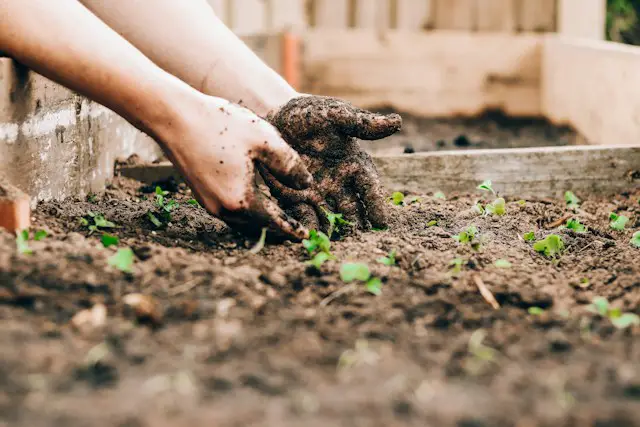
Every seed requires the right conditions to sprout, and similarly, every farm needs a foundational setup to flourish. Setting up your farm is akin to setting the stage for a grand play where each element, from the soil to the machinery, plays a pivotal role. Whether it’s a lush green pasture or a buzzing apiary, let’s take a comprehensive look at laying down your farm’s groundwork.
1. Soil Testing and Preparation
Soil Analysis: Before planting anything, understand the soil’s pH, nutrient levels, and texture. This is done via soil testing kits or through agricultural labs.
Amendments: Based on the soil test, you might need to add organic compost, lime, sulfur, or other soil conditioners to create the ideal environment for your crops.
Tilling & Plowing: Prepare the land by turning and breaking up the soil. This enhances aeration and makes it easier for roots to penetrate.
2. Water Resources and Irrigation
Water Source: Identify reliable water sources—wells, rivers, rainwater harvesting systems, or municipal supply.
Irrigation Systems: Choose between drip irrigation, sprinkler systems, furrow, or flood irrigation depending on your crops, land size, and water availability.
Water Conservation: Implement methods like mulching or contour plowing to retain soil moisture.
3. Infrastructure and Shelter
Barns & Sheds: For livestock or storage of farm equipment and harvest. Ensure they’re weather-resistant and adequately ventilated.
Greenhouses: If cultivating delicate crops or aiming for year-round cultivation, consider setting up greenhouses or polytunnels.
Fencing: Protect your farm from wild animals or trespassers. Options range from wooden fences to electric barriers.
4. Selecting Crops and Livestock
Climate Compatibility: Choose crops or animals suited to your region’s climate. Research local agricultural extensions for guidance.
Market Demand: Cultivate what’s in demand locally. This ensures a ready market and better profitability.
Rotation and Diversification: Avoid depleting the soil by rotating crops. Also, diversify to minimize risks associated with crop failure.
5. Farm Machinery and Tools
Essential Tools: Begin with basics—hoes, shovels, rakes, and pruning shears.
Machinery: Depending on the farm size and budget, consider tractors, plows, harvesters, or seed drills. Look into renting options for infrequently used equipment.
Maintenance: Regularly maintain and service machinery to extend lifespan and ensure safety.
6. Technology and Innovation
Agricultural Apps: From weather forecasting to pest identification, numerous apps can help modern-day farmers.
Automation: Consider automated feeders for livestock or drip irrigation systems with moisture sensors for crops.
Sustainable Innovations: Explore techniques like permaculture, agroforestry, or aquaponics, depending on your farm’s focus.
7. Workforce and Training
Hiring: Based on the farm’s scale, you might need farmhands, managers, or specialized workers like beekeepers or livestock handlers.
Training: Ensure the workforce is trained in using equipment safely, and understanding organic farming methods, or animal care standards.
Health & Safety: Equip your team with safety gear—gloves, protective eyewear, boots. Regularly review safety protocols.
8. Community and Networking
Local Farmer Groups: Join or form groups for knowledge sharing, bulk buying of seeds or equipment, or collective sales.
Workshops & Seminars: Attend or host sessions on new farming technologies, sustainable practices, or market trends.
Agritourism: Consider opening your farm for tours, workshops, or farm-to-table events to diversify income and engage with the community.
Setting up a farm is a journey of patience, learning, and adaptability. It’s about harmonizing with nature while leveraging human ingenuity. As you lay each brick, sow each seed, or welcome each animal, remember, that you’re not just setting up a business, but a sanctuary of life, growth, and abundance.
Sustainable Farming Practices
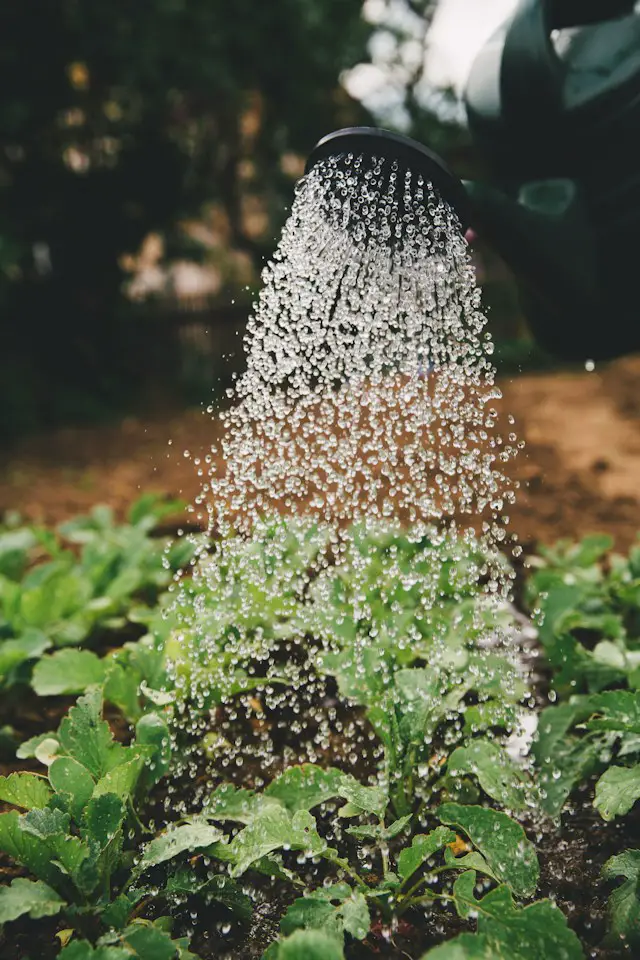
In an age of rapid environmental changes, embracing sustainability isn’t just a buzzword—it’s a lifeline for our planet and future generations. Sustainable farming acknowledges that agriculture can either deplete or replenish our world, depending on the choices we make. Let’s dive into the practices that nurture the land as much as the land nurtures us.
1. Soil Health Management
Cover Crops: Planting cover crops like clover or rye in off-seasons prevents soil erosion, suppresses weeds, and enhances soil fertility by fixing nitrogen.
Crop Rotation: Rotate crops seasonally to break pest cycles and reduce soil-borne diseases. It also aids in maintaining soil nutrient balance.
Reduced or No-Till: Minimize soil disruption to maintain its structure, moisture, and microbial life. It also reduces carbon release.
2. Integrated Pest Management (IPM)
Beneficial Insects: Encourage the presence of predatory insects like ladybugs, which naturally keep pest populations in check.
Natural Pesticides: Use neem oil, diatomaceous earth, or insecticidal soaps to target pests without harming the environment.
Disease-Resistant Varieties: Opt for crop varieties known for their resilience to pests and diseases.
3. Water Conservation and Management
Drip Irrigation: Deliver water directly to plant roots, reducing evaporation losses.
Rainwater Harvesting: Collect and store rainwater in barrels or ponds for future irrigation needs.
Mulching: Using organic matter like straw or leaves on the soil surface retains moisture, suppresses weeds, and reduces runoff.
4. Agroforestry and Polyculture
Intercropping: Plant complementary crops together. For instance, beans (nitrogen fixers) can be planted with corn (a nitrogen lover).
Buffer Zones: Plant trees or shrubs around farmlands to act as windbreaks, reducing soil erosion, and providing wildlife habitats.
Forest Farming: Cultivate crops under the canopy of existing forests, simulating natural ecosystems.
5. Livestock Integration and Rotation
Rotational Grazing: Regularly move livestock between pasture areas to prevent overgrazing and allow vegetation recovery.
Integrated Crop-Livestock Systems: Use animals to manage crop residues, turning them into valuable manure.
Holistic Management: View the farm as a cohesive ecosystem, with livestock playing a crucial role in its health and productivity.
6. Natural Fertilization
Composting: Convert organic waste into rich, nutrient-filled compost. It enhances soil structure, water retention, and microbial life.
Vermicomposting: Use worms, especially red wigglers, to break down organic matter into worm castings, a highly nutritious natural fertilizer.
Green Manure: Incorporate decomposing green or aquatic vegetation into the soil to improve its organic content.
7. Renewable Energy Integration
Solar Panels: Harness solar energy for farm operations. From irrigation pumps to lighting, use the sun to power your farm.
Biogas Production: Convert animal waste and organic materials into methane for cooking, heating, or electricity generation.
Wind Turbines: Utilize wind energy to generate electricity, especially in regions with consistent wind patterns.
8. Biodiversity and Habitat Preservation
Seed Preservation: Save seeds from season to season, promoting genetic diversity and reducing dependency on commercial seeds.
Natural Habitats: Leave patches of land wild as habitats for native flora and fauna, ensuring ecological balance.
Beekeeping: Foster pollinators like bees, which play a pivotal role in crop fertilization.
9. Sustainable Farming Certifications
Organic: Abstain from synthetic fertilizers, pesticides, GMOs, and irradiation to earn organic certifications.
Biodynamic: Embrace a holistic, ecological, and ethical approach to farming. This method views the farm as a living organism.
Fair Trade: Ensure that farmers receive equitable wages and work under ethical conditions.
Livestock Management
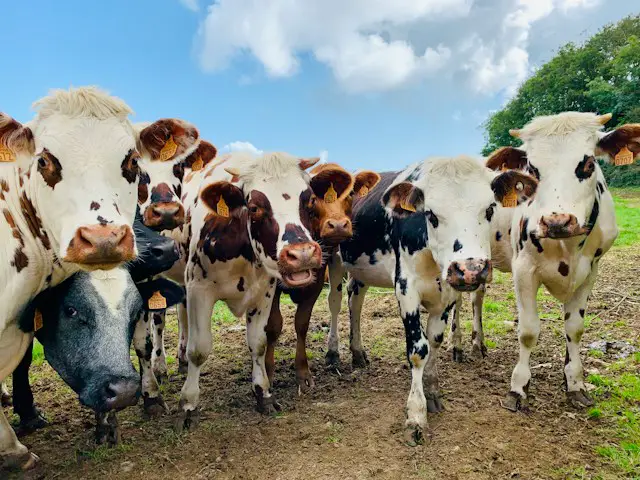
At the heart of any thriving farm with animals is effective livestock management—a synergy between the welfare of animals, environmental sustainability, and economic profitability. Whether you’re raising dairy cows or rearing backyard chickens, the principles of livestock management ensure productive, healthy, and humane treatment of animals.
1. Selection and Breeding
Choosing the Right Breed: Assess the breed’s suitability to your climate, farm size, and market demands.
Breeding Strategies: Utilize selective breeding to enhance desired traits such as disease resistance, higher yield, or better temperaments.
Genetic Diversity: Avoid inbreeding by maintaining a diverse gene pool, which ensures long-term herd health.
2. Nutrition and Feeding
Balanced Diet: Provide livestock with a diet enriched with essential nutrients—carbohydrates, proteins, vitamins, and minerals.
Pasture Management: Rotate pastures for grazing animals to ensure consistent access to fresh grass and prevent overgrazing.
Supplemental Feeding: In times of feed scarcity, provide hay, grains, or commercial feeds fortified with essential nutrients.
3. Health and Veterinary Care
Routine Check-ups: Schedule regular veterinary visits for vaccinations, deworming, and overall health assessments.
Disease Management: Isolate sick animals, maintain clean facilities, and use preventive medicines to curb disease outbreaks.
Holistic Health: Consider natural and alternative health practices, including herbal remedies and homeopathy, to bolster livestock health.
4. Housing and Shelter
Ventilation: Ensure barns and shelters have adequate airflow to prevent respiratory issues and maintain air quality.
Protection: Protect against predators, extreme weather, and pests.
Space: Allocate sufficient space per animal to reduce stress, avoid overcrowding, and prevent disease spread.
5. Waste Management
Manure Handling: Regularly collect and store manure. It can be composted and used as a nutrient-rich fertilizer.
Biogas Production: Convert animal waste into methane, which can be used as a renewable energy source.
Effluent Management: Properly manage liquid wastes, ensuring they don’t contaminate local water sources.
6. Ethical and Humane Treatment
Handling Techniques: Use low-stress handling techniques to ensure animal well-being and reduce injury risks.
Humane Slaughter: If raising animals for meat, ensure slaughter methods are humane and meet established ethical standards.
Enrichment: Provide animals with stimuli—like toys, scratching posts, or dust baths—that cater to their natural behaviors.
7. Record Keeping and Monitoring
Data Collection: Maintain records on birth and death rates, breeding cycles, vaccination dates, and growth patterns.
Technology Integration: Use RFID tags, software, or mobile apps for real-time monitoring and efficient data management.
Performance Analysis: Regularly assess records to gauge productivity, identify trends, and make informed decisions.
8. Sustainable Livestock Practices
Grass-Fed and Free Range: Prioritize natural grazing over grain feeding for better animal health and meat quality.
Organic Livestock Farming: Avoid synthetic growth hormones, antibiotics, and GMO feeds.
Integrative Farming: Combine crop and livestock farming for mutual benefits, such as using animals to control pests or manage crop residues.
9. Marketing and Value Addition
Direct Sales: Explore farmers’ markets, farm-to-table events, or direct online sales to boost profitability.
Value-Added Products: Transform raw products into cheese, yogurt, cured meats, or artisanal soaps to increase market value.
Branding and Storytelling: Build a brand around ethical, organic, or local farming practices to differentiate in the market.
Livestock management is a dynamic blend of science, art, and ethics. It’s a commitment to the well-being of animals, the health of the environment, and the needs of the community. By embracing these practices, farmers can ensure that their livestock not only thrives but also enriches the land and the people it feeds.
Harvesting and Post-Harvest Management

The culmination of months of meticulous planning, planting, and nurturing is the harvest. However, the journey doesn’t end with the collection of produce; post-harvest management is a critical stage that determines the quality, shelf life, and value of the product. This section offers a roadmap to ensure that the fruits of your labor are maximized to their full potential.
1. Timing the Harvest
Maturity Indicators: Understand the visual cues (color, size, texture) and physiological markers (sugar content, firmness) that indicate peak maturity.
Weather Considerations: Ideally, harvest during cooler parts of the day and avoid wet conditions to reduce spoilage risks.
Equipment Calibration: Ensure harvest equipment, if used, is calibrated to prevent damage and ensure uniformity.
2. Harvesting Techniques
Manual Harvesting: Use sharpened tools, wear gloves, and employ gentle techniques to reduce injury to the produce.
Mechanical Harvesting: Invest in machinery suitable for specific crops, ensuring they’re gentle and minimize bruising or damage.
Selective Harvesting: Some crops, like tomatoes or berries, may require multiple rounds of harvesting as individual fruits reach maturity.
3. Initial Processing at Field
Field Sorting: Remove damaged, diseased, or underripe produce at the source to improve overall batch quality.
Field Cooling: Use methods like shade nets, evaporative cooling, or cold water immersion to quickly lower produce temperature.
Packaging: Use well-ventilated crates or containers, ensuring produce isn’t overly compressed.
4. Post-Harvest Handling and Storage
Cleaning: Gently wash produce to remove dirt, residues, or pests. Consider using organic sanitizers to reduce microbial load.
Cooling: Utilize cooling methods like cold storage, forced-air cooling, or hydro-cooling to slow metabolic processes and reduce spoilage.
Controlled Atmosphere Storage: Regulate oxygen and carbon dioxide levels to further extend storage life for certain crops.
5. Pest and Disease Management
Bio-Pesticides: Use natural repellents or beneficial organisms to counter storage pests.
Hermetic Storage: Store grains or legumes in airtight containers to prevent insect infestation and moisture ingress.
Regular Inspection: Periodically check stored produce for signs of disease, mold, or pests, ensuring prompt removal of affected items.
6. Minimizing Post-Harvest Losses
Temperature Management: Store each crop at its optimal temperature to reduce rot and prolong freshness.
Ethylene Awareness: Recognize that fruits like apples produce ethylene, which can hasten ripening (or spoilage) of neighboring produce.
Hygiene: Maintain cleanliness in storage areas, equipment, and among workers to reduce contamination risks.
7. Value Addition and Processing
Canning and Preserving: Convert fresh produce into jams, pickles, or canned goods to extend shelf life and diversify products.
Drying and Dehydration: Use sun drying, freeze drying, or dehydrators to create long-lasting dried fruits, herbs, or vegetables.
Cold Pressing and Juicing: Transform fresh fruits into juices, ensuring pasteurization or refrigeration to retain freshness.
8. Transport and Market Delivery
Packaging Innovations: Use cushioned, breathable, or modified-atmosphere packaging to reduce transit damage and maintain freshness.
Cold Chain Integrity: Ensure refrigerated transport where necessary and minimize duration between harvest and market.
Labeling and Branding: Clearly label produce with harvest dates, variety, and any certifications (e.g., organic) to instill consumer trust.
The process from field to fork is intricate and demanding. Harvesting and post-harvest management not only influence the immediate economic returns of a farming enterprise but also shape the long-term reputation and sustainability of the farm. By mastering these stages, farmers can ensure their produce retains its quality, nutritional value, and market appeal, maximizing both profit and consumer satisfaction.
Benefits of Running a Small Farm

In a rapidly globalizing world, the romanticism of owning a small farm may seem juxtaposed with the race to scale up. However, the benefits of managing a small-scale agricultural operation run deep, encompassing economic, ecological, social, and personal dimensions. Let’s traverse this verdant landscape to unearth the myriad advantages of running a small farm.
1. Economic Benefits
Diversified Income Streams: The manageable scale allows farmers to diversify crops and livestock, buffering against the market volatility of a single commodity.
Direct-to-Consumer Sales: Engage in farm-to-table events, farmers’ markets, and CSAs (Community Supported Agriculture), which often fetch premium prices.
Low Capital Investment: Reduced land and infrastructure costs mean fewer loans and financial burdens.
Niche Market Opportunities: Cater to specific demands like organic produce, heirloom varieties, or artisanal dairy products, often attracting discerning clientele willing to pay a premium.
2. Ecological Benefits
Sustainable Practices: Smaller scale facilitates easier adoption of regenerative and organic farming practices.
Biodiversity Conservation: Rotate crops, intercrop, and maintain natural habitats, bolstering ecosystem health and resilience.
Soil Health: Embrace techniques like composting, no-till farming, and cover cropping, preserving soil structure and fertility.
Reduced Carbon Footprint: With shorter supply chains and often minimal mechanization, small farms can have lower carbon emissions.
3. Social Benefits
Community Engagement: Small farms often foster close-knit community ties, participating in local events, educational tours, and collaborative ventures.
Local Economy Boost: By hiring locally and purchasing local goods and services, small farms invigorate the surrounding economy.
Cultural Preservation: Many small farms maintain traditional farming practices, preserving cultural heritage and local histories.
Educational Platforms: Serve as hands-on learning centers for schools and community groups, teaching agriculture, ecology, and nutrition.
4. Personal Benefits
Work-Life Balance: Although farming is demanding, small-scale operations can offer more flexibility, allowing for a better balance between professional and personal life.
Physical Health: Engaging in regular farm chores provides cardiovascular, strength, and flexibility benefits.
Mental Well-being: The therapeutic allure of nature, coupled with the satisfaction of nurturing growth, can be a salve for modern-day stresses.
Skill Diversification: Running a small farm demands a vast skill set—from basic botany to marketing, offering continuous learning opportunities.
5. Innovations and Experimentation
Agility: Being smaller in scale, there’s more room to quickly adapt and try out innovative farming techniques or crop varieties.
Research and Development: Collaborate with agricultural institutions or NGOs on pilot projects, trialing new methods or products.
Personalized Farming: Customize farming practices based on personal values, be it permaculture, biodynamic farming, or agroforestry.
6. Ethical and Holistic Production
Ethical Standards: Manage livestock humanely, grow crops without harmful chemicals, and uphold high ethical standards in every farming decision.
Transparent Supply Chain: Offer consumers a clear view of food from farm to plate, fostering trust and loyalty.
Holistic Land Management: View the farm as an interconnected web, where each element—from soil microbes to large mammals—plays a critical role.
In essence, small farms aren’t just about quaintness or nostalgia. They are powerhouses of sustainability, community cohesion, and personal fulfillment. By celebrating and amplifying the role of small farms, we’re not only championing a way of life but also endorsing a vision of agriculture that’s harmonious, inclusive, and deeply rooted in the rhythms of nature.
Challenges and How to Overcome Them

Operating a small farm is akin to nurturing a delicate ecosystem. Just as each benefit sings the song of agrarian harmony, there are challenges that, if not addressed, can introduce discordant notes. This section delves deep into these challenges and offers solutions that harmonize the symphony of small-scale farming.
1. Financial Constraints
Challenge: Small farms often struggle with cash flow due to seasonal income, unexpected expenses, and market price fluctuations.
Solution: Diversify income sources by incorporating agro-tourism, workshops, or adding value-added products. Additionally, consider seeking grants, subsidies, or low-interest loans tailored for small-scale farmers.
2. Limited Access to Markets
Challenge: With the dominance of large-scale agribusiness, small farmers might find it hard to penetrate mainstream markets.
Solution: Build direct consumer relationships through CSAs, farmers’ markets, and online sales. Foster partnerships with local restaurants, schools, or retailers for a steady demand.
3. Labor Intensity
Challenge: Manual tasks can be labor-intensive, leading to physical strain and potential burnout.
Solution: Invest in ergonomic tools, leverage community workdays, or consider automation for repetitive tasks. Regularly attend workshops on efficient farming techniques to reduce labor.
4. Pest and Disease Management
Challenge: Without the resources for large-scale interventions, small farms can be vulnerable to pest infestations or disease outbreaks.
Solution: Adopt integrated pest management (IPM), encourage beneficial insects, and practice crop rotation. Stay educated about common pests and diseases in your region and their organic countermeasures.
5. Climatic Vulnerabilities
Challenge: With changing climate patterns, there’s an increased risk of drought, flooding, or unseasonal frosts.
Solution: Implement water conservation techniques, diversify crops for resilience, and consider investing in protective structures like greenhouses or shade nets.
6. Skill and Knowledge Gaps
Challenge: The multifaceted nature of farming requires expertise in various domains, from soil health to market trends.
Solution: Join local farming cooperatives, attend agricultural workshops, or consider mentorship under experienced farmers. Online courses and forums are also valuable resources.
7. Regulatory and Bureaucratic Hurdles
Challenge: Navigating agricultural regulations, certifications, or land use policies can be daunting.
Solution: Engage with local agricultural extension services, which often provide guidance on compliance. Stay updated with policy changes and consider legal counsel for complex issues.
8. Land Acquisition and Tenure
Challenge: High land prices or unclear land tenure can pose significant barriers to starting or expanding a farm.
Solution: Explore shared land agreements, lease-to-own options, or community land trusts. Engage with local agricultural organizations for guidance on land acquisition.
9. Technological Challenges
Challenge: Staying updated with the latest farming technologies or integrating them can be overwhelming and expensive.
Solution: Focus on cost-effective and scalable technologies. Collaborate with agricultural institutions or tech companies offering pilot programs or subsidies for small farms.
10. Mental and Emotional Stress
Challenge: Farming can sometimes be an isolating profession, leading to feelings of disconnect or stress.
Solution: Build a supportive network with fellow farmers, engage in community events, and consider seeking mental health resources or counseling.
In the dance of farming, challenges are as much a part of the rhythm as are the joys. They test resilience, adaptability, and ingenuity. By acknowledging these challenges and proactively seeking solutions, small farmers can not only sustain their operations but also thrive, painting a canvas rich with both trials and triumphs.
Costs Involved

Embarking on the journey of small-scale farming requires more than just a passion for the land and its produce. It demands a strategic financial outline, and an understanding of the costs, both overt and hidden, that underpin the venture. Here’s a meticulous breakdown of the expenses you might encounter and ways to navigate them efficiently.
1. Land Acquisition and Lease Costs
Upfront Purchase: The outright buying of farmland can be a significant investment. Costs vary widely based on location, quality, and accessibility of the land.
Leasing: An alternative to purchase, leasing can lower initial expenses, though it involves recurring payments and potentially less long-term security.
2. Infrastructure and Equipment
Buildings: Barns, sheds, greenhouses, and storage facilities are essential structures. Factor in construction or repair costs.
Machinery: Tractors, plows, seeders, and harvesters, while essential, can be capital-intensive.
Hand Tools: From spades to pruning shears, quality tools are worth the investment for longevity and efficiency.
3. Soil Preparation and Enhancement
Soil Testing: Regular soil tests ensure balanced nutrients and guide fertilization.
Fertilizers and Amendments: Costs vary based on whether you opt for organic or synthetic fertilizers.
Irrigation: Setting up drip systems, sprinklers, or rainwater harvesting infrastructure involves initial capital.
4. Seeds and Planting Materials
Seed Selection: Native, heirloom, or hybrid seeds have varying costs. Remember, quality seeds are crucial for a good yield.
Seedlings and Saplings: If purchasing young plants, factor in their costs, especially for perennial crops.
5. Pest and Disease Management
Organic Pesticides: Bio-pesticides or natural repellents, though eco-friendly, might carry a higher price tag.
Synthetic Pesticides: While potentially cheaper, they might demand more frequent applications and have ecological implications.
Disease Control: Fungicides, bactericides, and other disease management inputs need budget allocation.
6. Labor
Hiring Labor: Especially during planting and harvesting seasons, additional hands might be required. Consider daily wages or seasonal contracts.
Training: Investing in training sessions for specialized tasks ensures better farm productivity.
7. Licenses, Certifications, and Insurance
Agricultural Permits: Depending on the region, certain farming practices or crops might need permits.
Organic Certification: If aiming for organic produce, certification costs are involved.
Insurance: Protecting against crop failure, natural calamities, or machinery breakdown is essential. Premium costs vary based on coverage.
8. Marketing and Distribution
Packaging: Sustainable and attractive packaging can be an expense but enhances product appeal.
Distribution: Factor in transportation costs to markets or distribution centers.
Marketing Initiatives: Digital marketing, farm events, or promotional materials demand a budget.
9. Utilities and Recurring Costs
Electricity: Powering machinery, lights, or cooling systems.
Water: If not using natural sources, there might be costs associated with water usage.
Maintenance: Regular upkeep of equipment, machinery, and infrastructure.
10. Miscellaneous Expenditures
Research and Development: Experimenting with new crops or farming techniques.
Professional Services: Hiring consultants, agronomists, or accountants for specialized guidance.
Mitigating Costs: It’s essential to note that many of these costs can be mitigated or offset. Consider applying for agricultural grants, engaging in community barter systems, purchasing second-hand equipment, or collaborating with fellow farmers for bulk purchases. Embracing permaculture or regenerative farming can also reduce input costs in the long run.
While the costs might seem extensive, remember that they don’t all occur at once. Prioritizing based on immediate needs, planning for the long term, and being open to innovative financial solutions can make the journey of small-scale farming both economically viable and deeply fulfilling.
Pros and Cons of Small-Scale Farming
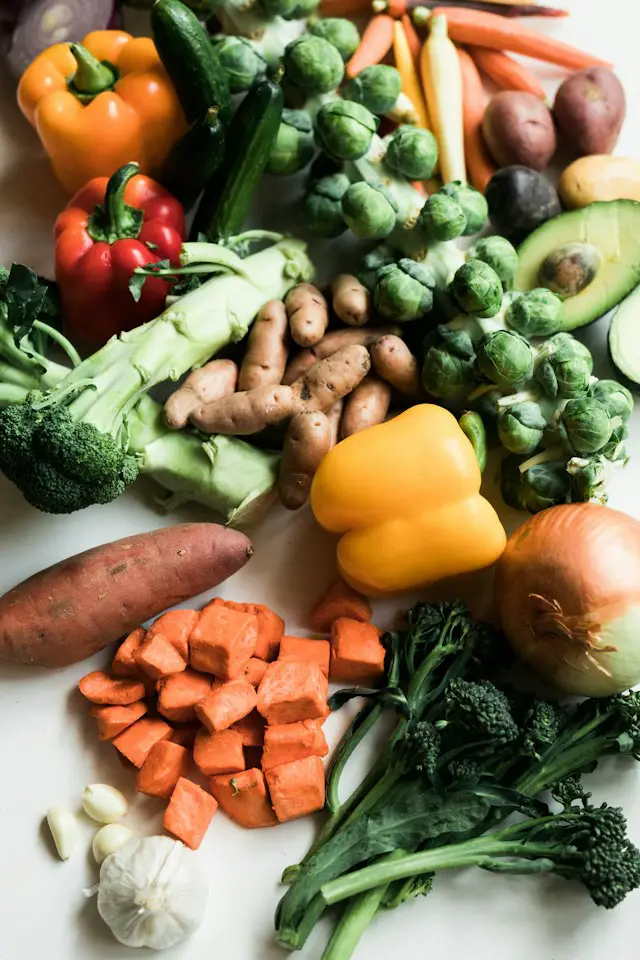
The bucolic charm of small-scale farming often paints an idyllic picture. Still, beneath the verdant layers, there are intricate dynamics at play, both beneficial and challenging. Let’s navigate this landscape, understanding the pros and cons that come with choosing the path of small-scale agriculture.
Pros
1. Ecological Benefits
Diversity: Unlike monocultures, small-scale farms often grow a variety of crops, promoting biodiversity.
Soil Health: With practices like crop rotation, composting, and reduced chemical use, soil health often improves, sequestering carbon and aiding water retention.
2. Community and Social Impact
Local Economies: By selling locally, small farms strengthen community bonds and boost the local economy.
Educational Opportunities: They can serve as educational hubs, teaching community members about sustainable agriculture.
3. Enhanced Crop Quality
Organic and Non-GMO: Small farms frequently adopt organic or non-GMO practices, resulting in cleaner, healthier produce.
Flavor: Limited transportation and immediate market availability often mean fresher and more flavorful produce.
4. Flexibility and Innovation
Experimentation: Easier to try out new crops, farming techniques, or business models on a smaller scale.
Adaptability: Quicker response to market changes, weather anomalies, or pest issues.
5. Direct Market Access
Farm-to-Table: Direct links with restaurants, CSAs, or farmers’ markets reduce middlemen and increase profit margins.
Storytelling: Opportunity to share the farm’s story, building trust and brand loyalty.
6. Holistic Well-being
Physical Health: Farming activities provide regular exercise, keeping the body active.
Mental Peace: Connection with nature, and nurturing crops, and animals can be therapeutic and mentally rewarding.
Cons
1. Economic Challenges
Income Instability: Dependence on seasonal crops might lead to uneven cash flows.
Higher Per-Unit Costs: Smaller operations might not benefit from economies of scale, leading to higher production costs.
2. Labor Intensity
Manpower Demand: Without the machinery that larger farms might afford, tasks can be labor-intensive.
Skills Requirement: Diverse crops and livestock often require varied, specialized skills.
3. Market Challenges
Competition: Competing with large-scale, industrial farms on price can be challenging.
Access to Distribution: Mainstream distribution channels might prioritize larger producers.
4. Vulnerabilities
Natural Calamities: A single weather event can jeopardize an entire season’s crop.
Pest and Disease: Limited resources might make comprehensive pest and disease management tough.
5. Limited Resources
Financial: Access to credit or grants might be harder compared to established, larger farms.
Knowledge and Training: Without a network or resources, gaining knowledge might be slow.
6. Regulatory and Bureaucratic Hurdles
Land and Water Use: Regulatory constraints can be limiting.
Certifications: Acquiring organic or specialty certifications can be time-consuming and costly.
Embracing small-scale farming is akin to weaving a tapestry, where each pro and con is a thread contributing to the larger picture. While challenges exist, they often pave the way for innovation, resilience, and an enriched connection to the land. On the other hand, the benefits underscore the profound impact such farms have – not just on the plate, but on the planet, people, and personal well-being.
Frequently Asked Questions (FAQs)
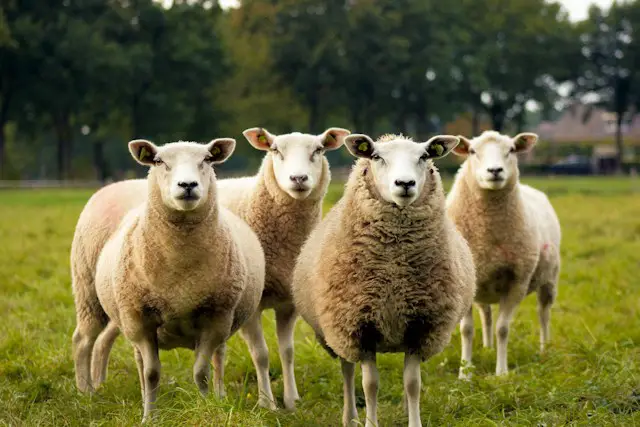
Navigating the myriad facets of small-scale farming might raise questions, some anticipated and others unique. Here’s a comprehensive collection of frequently asked questions to guide both budding and seasoned farmers through their journey.
1. What qualifies as a ‘small-scale’ farm?
Answer: The definition varies by region and context. Typically, a farm that operates on less than a specific acreage (often less than 50 acres) and emphasizes manual labor over machinery might be termed ‘small-scale’. It also relates to the volume of produce and revenue generated.
2. Can I start a small farm on a residential property?
Answer: It depends on the zoning laws of the region. Some residential zones permit small-scale agricultural activities, especially if it’s for personal consumption. Always check local regulations before starting.
3. Is organic farming the same as small-scale farming?
Answer: No, but they often overlap. Organic farming refers to practices that avoid synthetic chemicals. Small-scale farms might adopt organic methods, but the scale of the operation and the methods employed are independent concepts.
4. How do I decide on the best crops to grow?
Answer: Research local market demand, soil compatibility, climatic conditions, and your interest. Starting with a soil test can guide you about the crops best suited for your land.
5. How can I market my produce effectively?
Answer: Direct sales through farmers’ markets, Community Supported Agriculture (CSA) programs, local restaurants, and online platforms are popular. Sharing the unique story of your farm and adopting sustainable practices can also create a niche market.
6. Are there grants available for small-scale farmers?
Answer: Many governments and organizations offer grants to promote sustainable agriculture. It’s crucial to regularly check local agricultural departments, non-profits, and farming associations for opportunities.
7. How do I manage pests without resorting to chemicals?
Answer: Integrated Pest Management (IPM) is a holistic approach. Employing beneficial insects, crop rotation, companion planting, and organic repellents are effective strategies. Regular monitoring and early intervention are key.
8. Is machinery a worthwhile investment for a small farm?
Answer: It depends on the scale and your farming goals. Some equipment can significantly reduce labor and increase efficiency, but they come with maintenance costs and might not be feasible for very small operations.
9. Can I make a living solely from small-scale farming?
Answer: While challenging, it’s feasible. Diversified income sources, like adding value-added products (jams, cheeses), agritourism, workshops, and direct sales models, can bolster profits.
10. What should I do in the off-season?
Answer: Off-seasons are perfect for soil enrichment, infrastructure improvement, planning for the next season, attending workshops, and exploring new market opportunities.
Concluding Thoughts
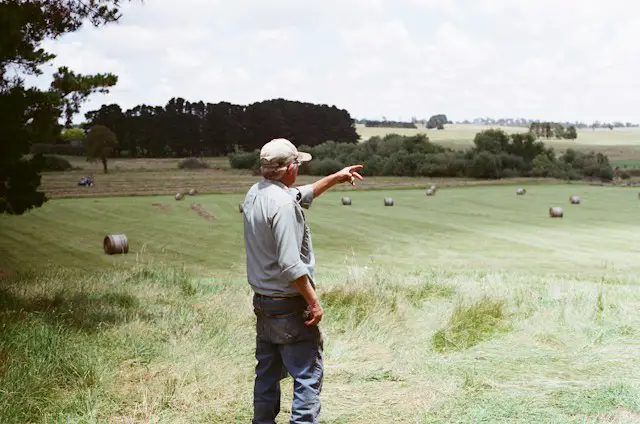
The sun sets over the verdant patchwork of small-scale farms, casting a golden hue over rows of crops, grazing livestock, and the hardworking souls that make these lands flourish. As we reflect upon the intricate tapestry of information, stories, challenges, and opportunities presented in this comprehensive guide, a few salient thoughts emerge.
1. Evolutionary Nature of Farming: At its core, small-scale farming is a dynamic endeavor, continually adapting to the oscillations of nature, market demands, and global challenges. The farmer, in essence, is both an artist and a scientist, sculpting the land with an evolving palette of knowledge and techniques.
2. The Intangible Rewards: Beyond the tangible yields of crops and livestock, the farm bestows intangible bounties – a profound connection to the land, the rhythmic cadence of seasons, the joy of birth and growth, and the lessons inherent in decay and renewal.
3. Sustainability as the North Star: The world stands at an environmental crossroads, with climate change, depleting resources, and biodiversity loss looming large. Small-scale farming, with its inherent focus on sustainable practices, can not only mitigate these challenges but pave a path towards a more harmonious coexistence with nature.
4. Community-Centric Approach: The farm isn’t an isolated entity. Its tendrils weave into the community, providing not just sustenance but opportunities for connection, education, and collective growth. This intertwining strengthens both the farm and its people.
5. Challenges as Catalysts: The journey of a small-scale farmer is not without its hurdles, be they economic, environmental, or existential. Yet, these challenges, rather than deterrents, are catalysts. They forge resilience, spur innovation, and instill a deep appreciation for the fragile balance of life.
6. A Lifelong Commitment to Learning: Farming is not a static discipline. With every season, there are new lessons, discoveries, and mysteries unveiled. The successful farmer is an eternal student, thirsty for knowledge and receptive to the teachings of the land, the crops, the animals, and fellow farmers.
In the final reckoning, embarking on the journey of small-scale farming is both a privilege and a responsibility. It’s an act of love, dedication, and, above all, hope. Hope for a future where the land is revered, food is celebrated, communities thrive, and the rhythms of nature dictate the dance of existence.
May this guide be the wind beneath the wings of every aspirant farmer, gently guiding them towards a horizon painted with the hues of abundant harvests, joyous laughter, and the sacred symphony of nature in harmony?
Resources and Further Reading

Embarking on the path of small-scale farming requires a vast reservoir of knowledge, skills, and insights. This section serves as a gateway to trusted resources, seminal books, organizations, and more. While the journey is unique for each farmer, these tools and guides will illuminate the path.
Books:
1. “The Market Gardener“ by Jean-Martin Fortier
A comprehensive manual for establishing a successful small-scale organic farm. Fortier delves into tools, techniques, and his own experiences in making farming profitable on small plots.
2. “The New Organic Grower“ by Eliot Coleman
A masterclass in organic farming, this book covers everything from soil health to crop rotation. Coleman’s decades of experience shine through.
3. “Farming While Black: Soul Fire Farm’s Practical Guide to Liberation on the Land“ by Leah Penniman
Addressing the deep roots of racial inequality in farming, this is both a guide and a manifesto for reclaiming the sacred connection to the land.
Online Resources:
1. National Sustainable Agriculture Coalition (NSAC)
An alliance advocating for federal policies supporting the sustainability of farms. Offers valuable resources, grant information, and policy updates.
2. ATTRA – National Sustainable Agriculture Information Service
Offers publications, tutorials, and databases on sustainable farming. From pest management to farm start-up guides, ATTRA covers a wide spectrum.
Aimed at marketing for small farmers, this site provides courses, podcasts, and articles to help farms connect with customers and grow their businesses.
Courses & Workshops:
1. UC Santa Cruz Center for Agroecology & Sustainable Food Systems
Renowned for their ecological horticulture program, they offer immersive experiences in organic farming and gardening.
2. Stone Barns Center for Food & Agriculture
Offering workshops, farm apprenticeships, and programs that integrate sustainable agriculture with culinary insights.
Organizations:
Dedicated to supporting the next generation of farmers, they offer resources, networks, and advocacy.
2. Organic Farming Research Foundation
Provides grants and resources for organic farming research and education.
A pioneering research institute focusing on organic farming, offering training programs, research reports, and farmer-centric resources.
Forums & Networks:
1. Permies
A community dedicated to permaculture and sustainable practices, offering a vibrant platform for discussion, knowledge sharing, and collaboration.
Connect with farmers globally, sharing insights, challenges, and solutions.
As you sow the seeds of your farming aspirations, let these resources be the nourishing rain, the guiding sunlight, and the protective canopy. Farming is both art and science and in this alchemical blend, continuous learning is the elixir. Dive deep, engage actively, and remember, every farmer adds a unique leaf to the ever-growing tree of agricultural wisdom.

